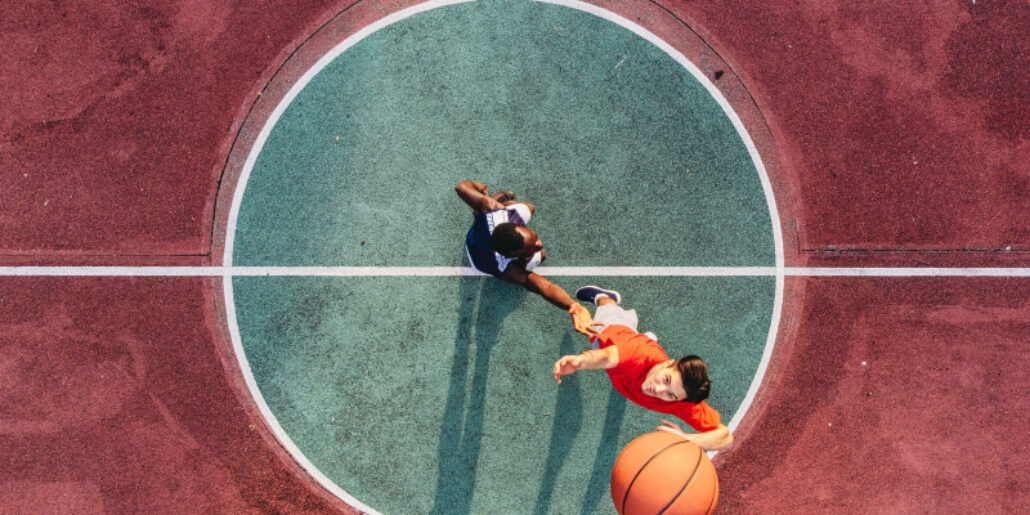Summit Orthopedics physical therapist and former high school basketball athlete Josh Feeney, DPT, OCS, CGFI, discusses conditioning exercises to get ready for basketball season.
There’s a lot to love about basketball. It’s a great cardiovascular workout and a fun team sport that builds camaraderie among the five players on the court. And who doesn’t love the swish of the ball through the hoop?
“It’s a very fast-paced sport, it’s very dynamic, and it’s high-scoring, which makes it fun to play and to watch,” said Summit Orthopedics physical therapist and former high school basketball athlete Josh Feeney, DPT, OCS, CGFI. “And even once you no longer play competitively, you can always go shoot hoops with friends. It’s a lot of fun, and I understand why so many people love it.”
To get ready for the basketball season, it’s smart to engage in some conditioning drills beforehand. “In general, you’ll want to focus your basketball conditioning in two main areas: cardiovascular conditioning and weight training,” Feeney said. Here are some of his best tips for each.
Cardiovascular basketball conditioning drills
Running with interval training
Any type of running will help get you in shape for basketball’s demands, but interval training is the best kind of running activity for basketball conditioning. “Basketball is an interval sport, with lots of stop and go,” Feeney said. “So, you want to be specific in the way you’re training for that. It’s not a marathon.”
Try some short bursts of sprints or jogging, where you’re changing speed but also resting for a brief time in between. This can be done on trails or on a track. Feeney recommends running 100-meter or 200-meter repeats.
Cross-training
Feeney routinely recommends cross-training, which involves doing some cardiovascular activity that does not mimic basketball. This could be cycling, swimming, or doing 30 minutes on an elliptical or another cardio machine at the gym.
Cross-training works your body and your legs in a slightly different way, versus always doing the same, repetitive movement. “While you’ll want to do sports-specific training, it’s always good to round yourself out” with cross-training, Feeney said. “Change is good for our body, and cross-training may help to reduce overuse injuries.”
Even when you’re doing cross-training, continue to think about incorporating interval training drills for basketball conditioning. Change your pace, and your heart rate, for 30 seconds to a minute at a time. “Changing how hard you’re working, as measured by your heart rate and your rate of perceived exertion, is a really good way for anyone to work out — from youth to older people,” Feeney said. Not only is changing your heart rate good for its own sake, but it also simulates the dynamic environment of basketball, Feeney noted.
Weight training basketball conditioning exercises
For the legs
For a lower-body workout, Feeney recommends:
- Any kind of squats or lunges
- Lunges while holding a medicine ball and twisting to one side or the other, to develop strength in rotation
- Band walks or monster walks
“All of these conditioning drills mimic the defensive positions and the “triple threat” position that’s used so often in basketball,” Feeney said. Additional recommendations include plyometric exercises:
- Double-leg broad jumps
- Single-leg hops for distance
For the upper body
- Planks
- Pushups
- Lat pull-downs
- Flys and reverse flys
“All of these will help strengthen your upper body, including your back and core, so you’re ready to start, stop, jump, pivot, twist, and turn,” Feeney said.
More Tips and Resources for you
- Looking to excel in hockey? Learn the about the top 5 hockey exercises for speed, power, and control.
- Learn more about how to avoid hockey overuse injuries

